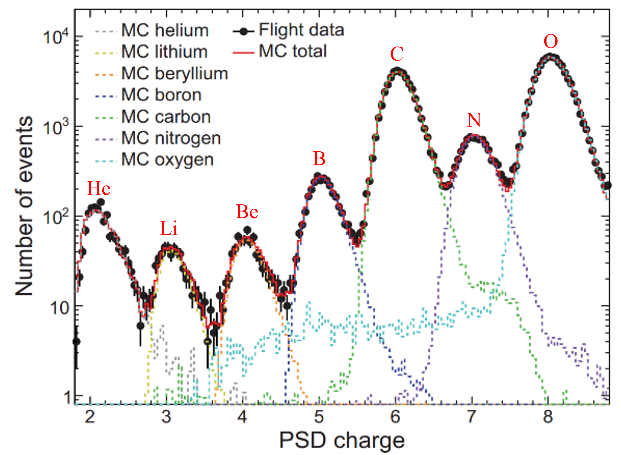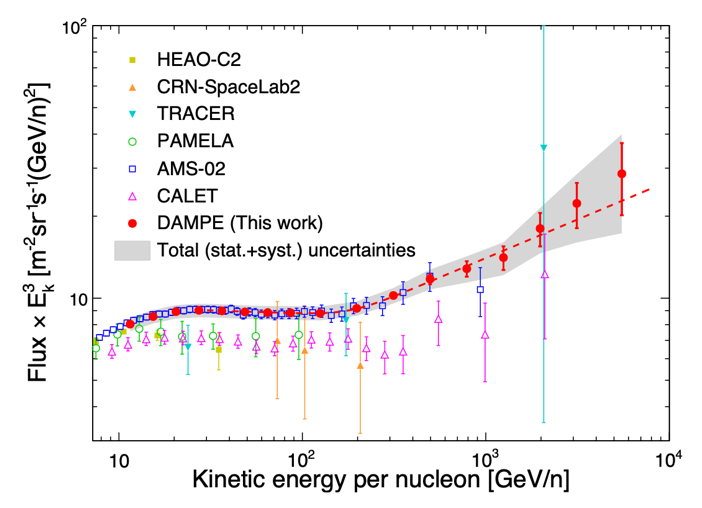Dark Matter Particle Explorer Obtained a High-precision Cosmic-ray Boron Spectrum
The Dark Matter Particle Explorer (DAMPE, also known as “Wukong”) Collaboration has obtained a high-precision cosmic-ray boron spectrum in the energy range of 10 GeV/n–8 TeV/n, and has discovered a spectral "hardening" phenomenon around 182 GeV/n for the first time. The findings were published in Physical Review Letters.
DAMPE is a satellite mission equipped with the thickest calorimeter made of bismuth germanium oxide, providing an energy coverage range more than twice that of previous space experiments. The Plastic Scintillator Detector (PSD), developed by the Institute of Modern Physics (IMP) Chinese Academy of Sciences (CAS), is a core detector for cosmic-ray nuclei identification due to its excellent charge measurements capabilities.
Using DAMPE data, researchers discovered a significant "hardening" feature in the boron spectrum around 182 GeV/n, with a confidence level of 8 sigma. The study revealed that the secondary boron spectrum hardens roughly twice as much as that observed in primary cosmic rays (protons and helium nuclei), while remaining consistent with the hardenings in boron-to-carbon and boron-to-oxygen flux ratios.
These results are in good agreement with the theoretical prediction that cosmic-ray boron is produced through fragmentation reactions between primary cosmic rays (such as carbon and oxygen) and interstellar matter.
This discovery not only provides crucial evidence for studying cosmic-ray propagation processes, but also offers insights into refining existing theoretical models. "DAMPE has set a new standard of precision in measuring cosmic-ray energy spectra at TeV energies,” noted one of the journal’s reviewers.
The research was conducted by researchers from IMP, Purple Mountain Observatory CAS, University of Science and Technology of China, Gran Sasso Science Institute (Italy), and the University of Geneva (Switzerland).
Dr. CHEN Zhanfang (Co-supervisor: ZHANG Yapeng), a postdoctoral researcher at IMP, made significant contributions to this study by conducting parallel analyses on particle identification of cosmic-ray boron, detection efficiency corrections, uncertainty analysis, and final boron spectrum results.
The study was supported by the National Key Research and Development Program of China, the National Natural Science Foundation of China, CAS, Jiangsu Provincial programs, and the Gansu Postdoctoral Research Project.
DOI: https://doi.org/10.1103/PhysRevLett.134.191001

Figure 1. The charge spectrum from DAMPE's PSD for particle identification of cosmic rays. (Image from DAMPE)

Figure 2. The measurement results of the cosmic-ray boron spectrum by DAMPE. (Image from DAMPE)


 甘公网安备 62010202000713号
甘公网安备 62010202000713号


